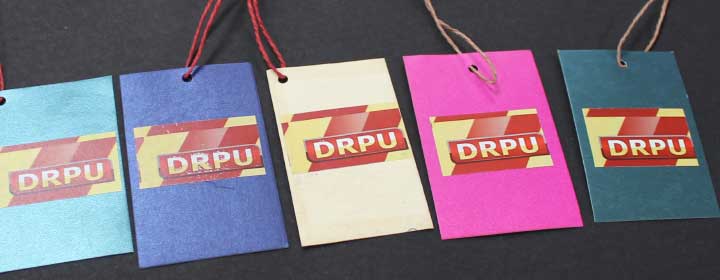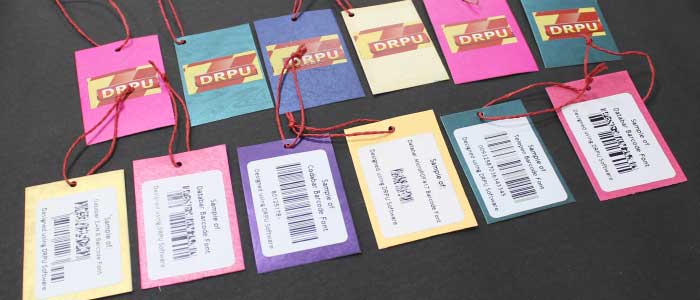Introduction of Business Barcodes
Business barcodes refer to the use of barcode technology in various aspects of business operations such as inventory management, asset tracking, document management, and supply chain management. They are used by various types of businesses to track inventory, process transactions, and manage logistics.
Business barcodes can contain a wide variety of information depending on their specific use case. In general, business barcodes may contain product or item identifiers, pricing information, inventory data, customer information, shipping and tracking details, or other relevant information., the information encoded in business barcodes is used to streamline business operations, improve efficiency, and provide accurate and timely information to stakeholders throughout the supply chain.
Download and Install
Business Barcode Label Maker SoftwareBenefits of Using Automated Barcode Scanning Systems in Business Settings
Automated barcode scanning systems offer several benefits in business settings, including:
-
01
Improved Efficiency
Barcode scanning systems can significantly improve the speed and accuracy of data collection, reducing the time and effort required for manual data entry. This leads to improved efficiency in various business operations such as inventory management, order processing, and shipping.
-
02
Data Insights
Barcode scanning systems provide valuable data insights that can help businesses make informed decisions about their operations. For example, tracking inventory levels can help businesses optimize their ordering processes and reduce the risk of overstocking or stockouts.
-
03
Reduced Errors
Barcode scanning eliminates human error associated with manual data entry, resulting in accurate data capture and reduced errors in operations like inventory management and shipping.
-
04
Real-time Tracking
Barcode scanning systems allow for real-time tracking of inventory and assets, making it easier to monitor stock levels and track the movement of products or items through the supply chain.
-
05
Cost Savings:
The use of automated barcode scanning systems reduces the need for manual labor and paper-based processes, which can result in the significant amount of cost savings over time period.
-
06
Improved Customer Service
Automated barcode scanning systems play a major role in improving the customer service by ensuring timely and accurate order delivery fulfillment, reducing the risk of shipping errors and delays.
Overall, the benefits of using automated barcode scanning systems in business settings are improved efficiency, reduced errors, cost savings, real-time tracking, improved customer service, and valuable data insights.
Training of Business Workers to use Barcode Scanning Systems Effectively
To train business workers to use barcode scanning systems effectively and efficiently, the following steps can be taken:
-
Provide Initial Training:
The first step is to provide initial training on how to use the barcode scanner, how to scan barcodes, and how to interpret the information they receive. This training should also include how to troubleshoot common issues with the barcode scanner.
-
Provide Hands-on Experience:
Once workers have received initial training, provide hands-on experience for them to practice scanning barcodes in a controlled environment. This will help them build confidence and become more efficient in using the barcode scanner.
-
Reinforce Training with Job Aids:
Use visual aids such as posters or laminated cards with step-by-step instructions to reinforce the training that was provided. This will serve as a quick reference guide for workers.
-
Conduct Regular Refresher Training:
Regular refresher training should be conducted by the professionals to ensure that the business workers stay up to date with any changes in barcode scanning policies or procedures.
-
Incorporate Barcode Scanning into Job Responsibilities:
Incorporate barcode scanning into workers' job responsibilities so that they can gain more experience and become more proficient in using the barcode scanner.
-
Provide Incentives:
Provide incentives such as bonuses or rewards for workers who demonstrate proficiency in using the barcode scanner. This will encourage them to improve their skills and become more efficient in their work.
Various Business Types that use the Business Barcodes
Business Barcodes are typically used in a wide range of business settings, including retail, manufacturing, logistics, service industries, e-commerce, and publishing industries.

-
In Retail, barcodes are used for inventory management and to track sales data. They are typically include a unique product identifier such as a UPC or EAN code, as well as pricing information. Retailers can use barcodes to quickly and accurately record sales, automate the checkout process, monitor inventory levels, and reorder products as needed. They are also used for tracking customer loyalty programs, mobile payments, and gift cards.
-
In Manufacturing, barcodes are used for tracking inventory, production processes, and assets. They are used to track the movement of materials and products throughout the supply chain. Barcodes can be used to monitor the progress of a product through each stage of the manufacturing process and to track raw materials and finished products.
-
In Logistics and Supply Chain Management, barcodes are used to track shipments, manage warehouse operations, and monitor inventory levels. They may contain shipping and tracking information such as the sender and receiver addresses, the weight and dimensions of the package, and the shipment's delivery status. Barcodes can be used to quickly and accurately identify products, and monitor the status of orders to ensure that they are delivered to the correct destination.
-
In Service Industries, barcodes are used to track equipment, documents, and supplies. For example, healthcare providers can use barcodes to track medical equipment and supplies, and to ensure that they are properly sterilized and maintained.
-
In E-Commerce, business barcodes are used to track inventory levels and manage orders. They are also used for customer support and to monitor the performance of online marketplaces.
-
In the Publishing Industries, Barcodes on books may contain an ISBN number and other book-specific information. This information is used by booksellers and distributors to manage inventory and fulfill orders.
Overall, business barcodes play an important role in streamlining operations, reducing errors, and increasing efficiency across a wide range of industries. Barcode Technology is an important tool for improving accuracy in various aspects of business operations.
Some Best Practices for Selecting and Implementing Barcode Systems in Business Settings
Some best practices for selecting and implementing barcode systems in business settings include:
-
Conducting a Thorough needs Assessment
Before selecting a business barcode system, it's important to identify the specific needs and requirements of the business, such as the type and volume of products being tracked and the required level of accuracy and speed.
-
Choosing the Right Type of Barcode for Business
There are different types of barcodes available like Code 39, Code 128, UPCA, EAN, etc, each with its own specifications and use cases. It's important to choose the right type of barcode that best suits the business needs.
-
Selecting the Appropriate Hardware and Software
Once the type of barcode is chosen, it's important to select the appropriate hardware and software to support the business barcode system. This includes barcode scanners, printers, and software for inventory management.
-
Training Staff
Proper training of staff members of an organization on how to use the barcode system is crucial for its successful implementation in the business settings. Staff members should be trained on how to scan and process the barcode labels accurately and efficiently.
-
Regular Maintenance and Calibration
Barcode systems require regular maintenance and calibration to ensure they continue to operate accurately and efficiently. This includes cleaning scanners and printers, replacing worn-out parts, and calibrating the system.
-
Testing and Monitoring
Before implementing the barcode system, it's important to conduct thorough testing and monitoring to identify and address any potential issues in the system. This helps to ensure that the system is functioning properly and accurately tracking inventory.
Some Examples of Successful Business Barcode System Implementations
Barcode system implementations have been successful across various businesses and industries, providing a range of benefits. Here are a few examples:
-
01
Asset Management
Barcode systems are commonly used in asset management to track inventory and equipment. For example, a company may use a barcode system to track their IT equipment, such as laptops and printers. This allows them to keep track of their assets, monitor inventory levels, and reduce losses. Barcode systems can also help with maintenance schedules, ensuring equipment is serviced regularly and reducing downtime.
-
02
Sales and Inventory Management
Barcode systems are commonly used in retail businesses to manage sales and inventory. For example, a clothing store may use a barcode system to track sales, monitor inventory levels, and order new stock. This allows the store to make data-driven decisions about which items are selling well, which items need to be restocked, and when to run promotions.
-
03
Time and Attendance
Barcode systems are also used in time and attendance systems to track employee hours. For example, employees can scan their barcode when they arrive at work and when they leave, allowing the company to accurately track hours worked and calculate payroll. This reduces errors and ensures employees are paid accurately.
-
04
Manufacturing
Barcode systems are commonly used in manufacturing to track materials, monitor production, and manage inventory levels. For example, a manufacturer may use a barcode system to track the movement of raw materials through the production process, ensuring that each stage is completed in a timely manner. This improves efficiency, reduces waste, and ensures that finished products are produced on time.
Overall, barcode systems provide numerous benefits for businesses, including improved inventory management, reduced errors, improved efficiency, and increased productivity.
